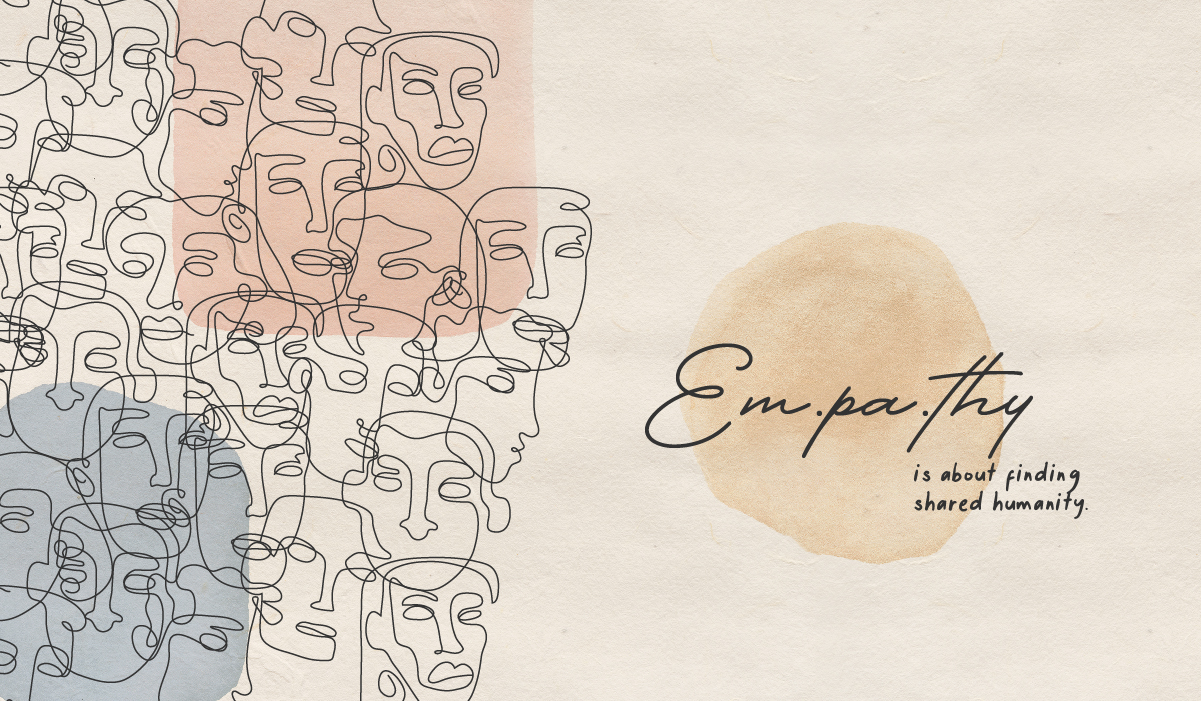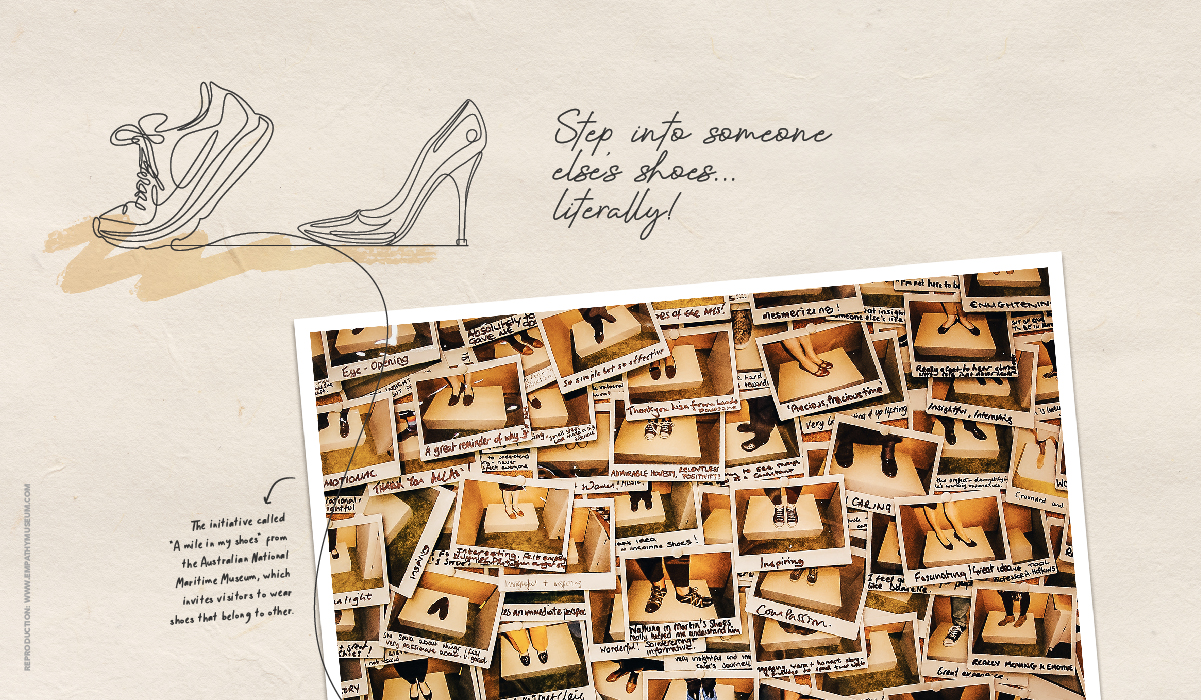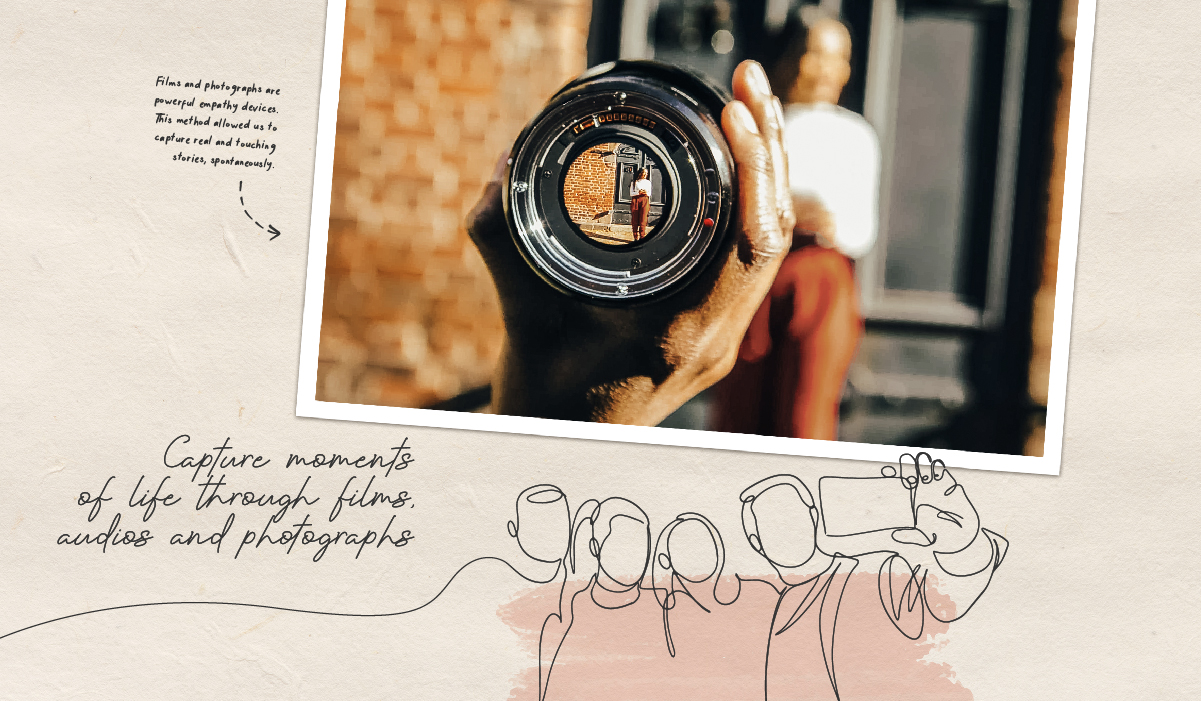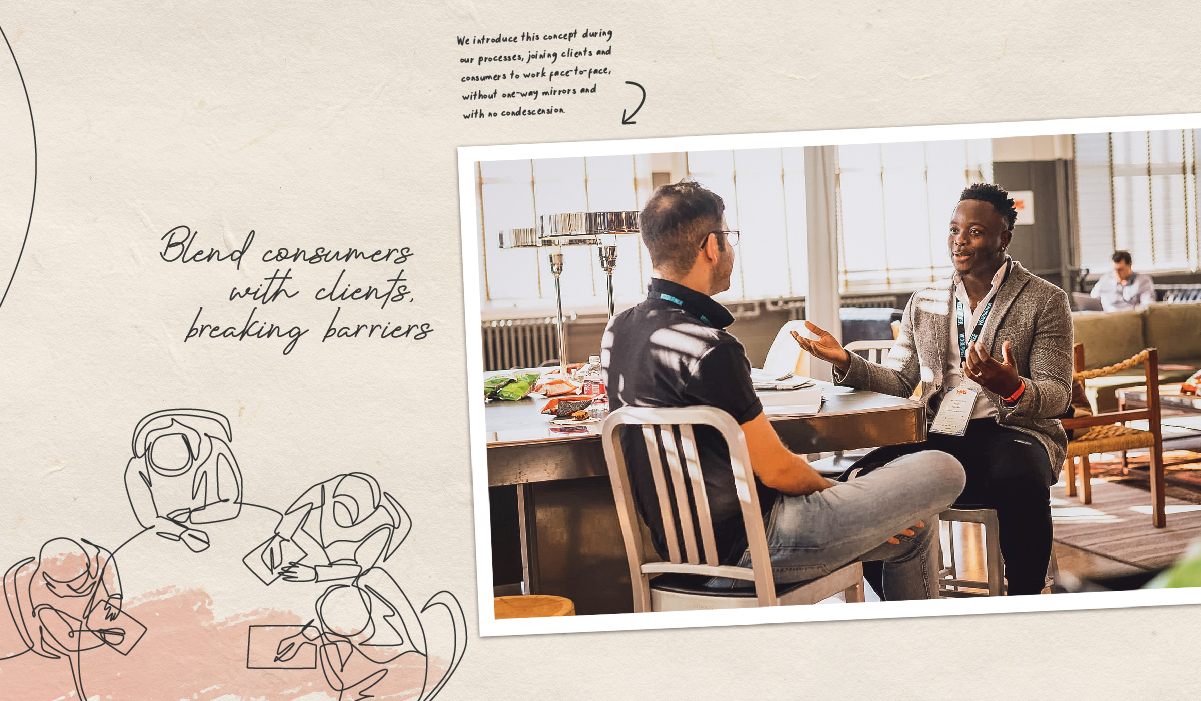With the rise of digital, and more specifically of social media, a wide range of solutions and tools have been developed, allowing brands to become more embedded in consumers’ daily lives. Those who succeed in being integrate in a natural way thank empathy offer valuable insights on their uses and consumption habits, thereby transforming the way they are perceived by brands.

In the day-to-day life of big corporations, agencies or consulting companies it’s easy to forget the target consumer’s reality. Although consumers are on the core of everything that is done, thought and designed, oftentimes stakeholders know them through figures and reports, but rarely see them in flesh.
It is a challenging task to make consumer insights known outside the CMI (Consumer & Market Insights) department and engage more of the company’s staff in the process of understanding the target consumer.
Today there is an increasing tendency to value big data and artificial intelligence – which we, at CBA B+G, totally support. However, we can’t forget the great value of building emotional and human ties throughout the research and innovation process, by using tools that promote an empathetic immersion in the lives of consumers.
Empathy boosts transformation
But what exactly does empathy mean? According to the Australian philosopher Roman Krznaric, it’s about finding shared humanity. He believes that we are urgently in need of empathy to create the ‘social glue’ to hold our society together. From a business point of view, empathizing with consumers is not only ‘cool’; we believe it also leads to transforming, effective and positive results, in three different ways:
- Empathy benefits companies, promoting internal engagement: stepping into other people’s shoes makes us appreciate them more, they grow in importance before our eyes. Therefore, it is fundamental to have the different teams of a company look at the final consumer with more empathy. This approach will promote a higher level of engagement with the product or service that is being developed.
- Empathy drives purpose: more than ever, we are aware that brands must build a positive impact territory. An empathic attitude is a great way to get there, as it implies in considering consumer’s needs and wishes beyond the offer, trying to understand how to foster well-being in a broader sense.
- Empathy leads to more assertive innovation: In the light of empathy, consumers are viewed as people, and not just consumers. All of a sudden, ‘target AB 18-25’ gets a name, a history, a life. Thus, we can experience their needs, priorities, creating purpose-driven products and services.
How can we be more empathetic towards consumers?
Storytelling is at the heart of any empathic process, and there are countless tools, non-digital, hybrid or completely virtual which engage the spectator in the story in a simple, touching and impactful way. Here are some tools and examples that can be applied to society and by brands.
If empathy means to step into other people’s shoes, then why not literally do that? That is the proposal of the initiative called “A mile in my shoes” from the Australian National Maritime Museum, which invites visitors to wear shoes that belong to other (real!) people and listen to them telling parts of their stories. In São Paulo, the exhibition “Diálogo com o Tempo” (Dialogue with Time), hosted by Unibes Cultural, has created an immersion environment in the universe of old age, inspired by the same principle.
At CBA B+G, we have applied the same idea during an Innovation workshop held for Plenitude – a brand of disposable underwear, designed for people who suffer from incontinency. We have asked the participants to wear the underwear for three days, to put themselves in the consumers’ shoes and better understand their needs.

Using the product myself was revealing. We have always focused on absorption, however I noticed opportunities to go beyond. These insights led to new innovative attributes for the product, which are currently being developed by our Engineering team. Today we are close to offering one more benefit to better meet our consumers’ needs
Mônica Fernandes, CSI Adult Care Leader, Kimberly-Clark
Films and photographs are powerful empathy devices. This thought led the Chinese artist Ai Wei Wei to create the film “Human Flow” to raise global awareness about the refugees crisis. Brands also make use of empathetic films to create impactful campaigns. “Thank you, Mom”, the most successful campaign in the history of P&G is really touching because it effectively puts spectators in the place of mothers, creating a strong sense of identification.
At CBA B+G, we have been running ethnographic surveys and online diaries about consumers’ journey, asking them to film moments of their lives using their mobile cameras. For one of the partners we work with, from a hitchhiking app, we used the methodology ‘fear accounts’, through which we kept in touch with the app users via WhatsApp during a week, asking them to send us an audio each time they got scared when using the service, telling us what happened and how they felt.
This method allowed us to capture real and touching stories, spontaneously.

Who says we cannot mix consumers and clients, spectators and artists, experts and laypeople? Breaking these barriers is also a powerful way to connect people and develop empathy.
We introduce this concept during our processes, joining clients and consumers to work face-to-face, without one-way mirrors and with no condescension.Today, we do the same remotely.
Alex Espinosa, CBA B+G’s managing partner and Head of Innovation, explains that the objective is to “create ecosystems where clients, consumers, mentors and experts co-create together with a common purpose, enabling a multi perspective view of the challenge and incorporating experiences that boost the developed solution”.

Many other tools allow companies to adopt a more empathetic approach with consumers and thus build a more emotional and human relationship with them. In the next issue dedicated to empathy, we will explore together how different digital tools, such as Virtual Reality or Augmented Reality, could be effective solutions to better meet the needs of targets and formulate meaningful insights.
Cet article a pu voir le jour grâce à la contribution de : Carmen Beer, Ana Cerqueira, Giuliana Sanchez, Thaísa Miyahara, Ana Paula Moreno, Alex Espinosa, Cibele Rodrigues, Demer Santos, Mônica Fernandes, Josy Lamenza, Daniela Irrazabal, Rosario Maglione, Renato Storni and Luis Bartolomei.
